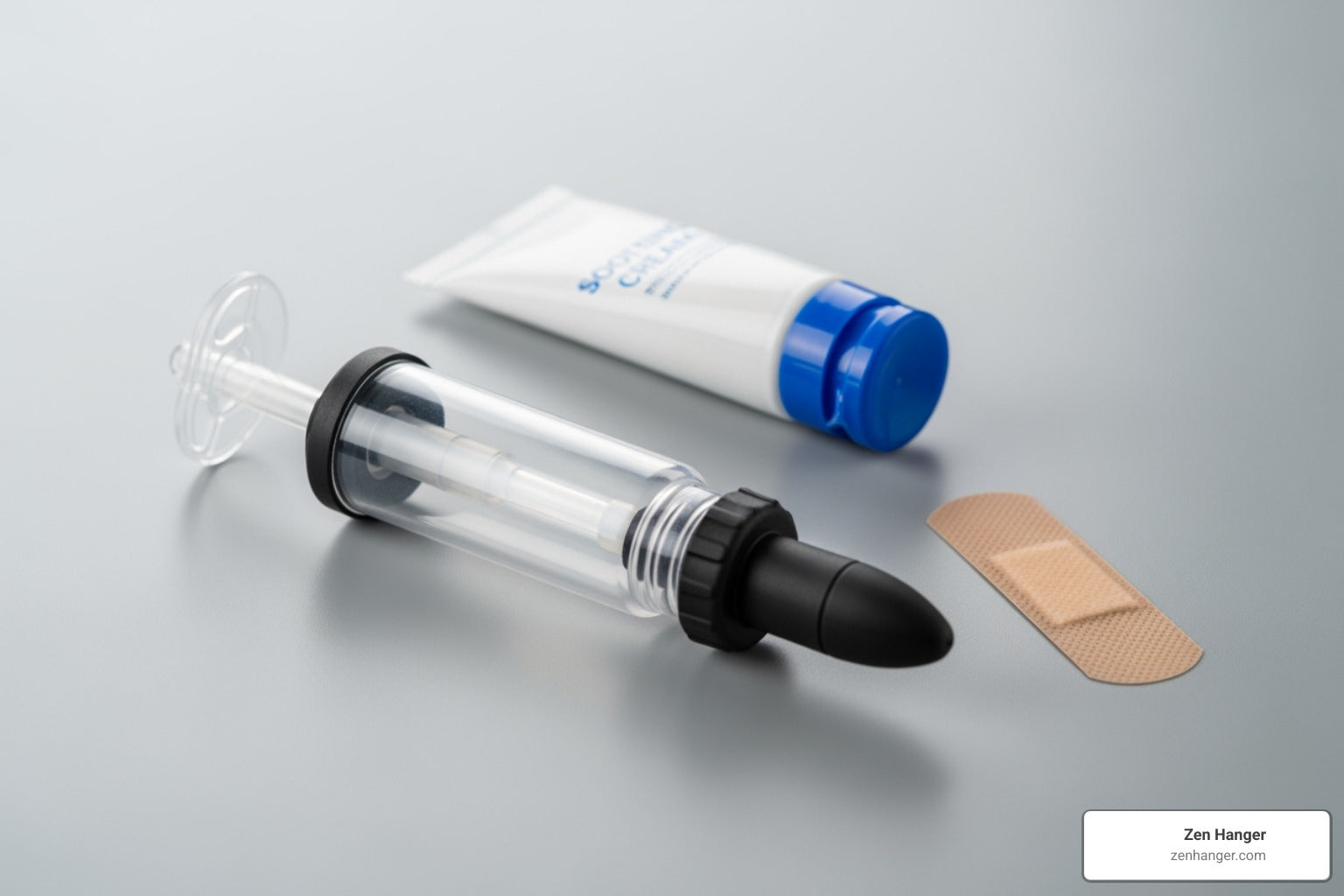
How to Understand Penis Pump Side Effects in 3 Easy Steps
- Written
Why Understanding Penis Pump Side Effects Matters for Your Safety
Understanding potential penis pump side effects is crucial for safely using a vacuum erection device. While most issues are mild and temporary, serious complications can occur, making education a key part of the process.
Potential Penis Pump Side Effects:
- Mild: Bruising, petechiae (small red dots), numbness, cold sensation.
- Serious: Skin necrosis, severe bleeding, penile cysts, blood clots.
- Key Risk Factors: Blood disorders, blood-thinning medications, diabetes, improper use.
Most side effects stem from improper use or low-quality devices. Medical-grade pumps with safety features like vacuum limiters significantly reduce these risks.
When to Seek Medical Help:
- Pain or bruising lasting more than a week.
- Severe bleeding or suspected blood clots.
- Skin necrosis or unusual masses.
- Signs of infection.
Medical research shows that with proper devices and medical guidance, serious complications occur in less than 0.5% of users. The key is quality equipment and correct protocols.
I'm John Hanger, President at ZenHanger. I've dedicated my career to researching safe penile improvement methods. My goal is to educate men on penis pump side effects and proper usage to help you make informed, safe decisions about your penile health.
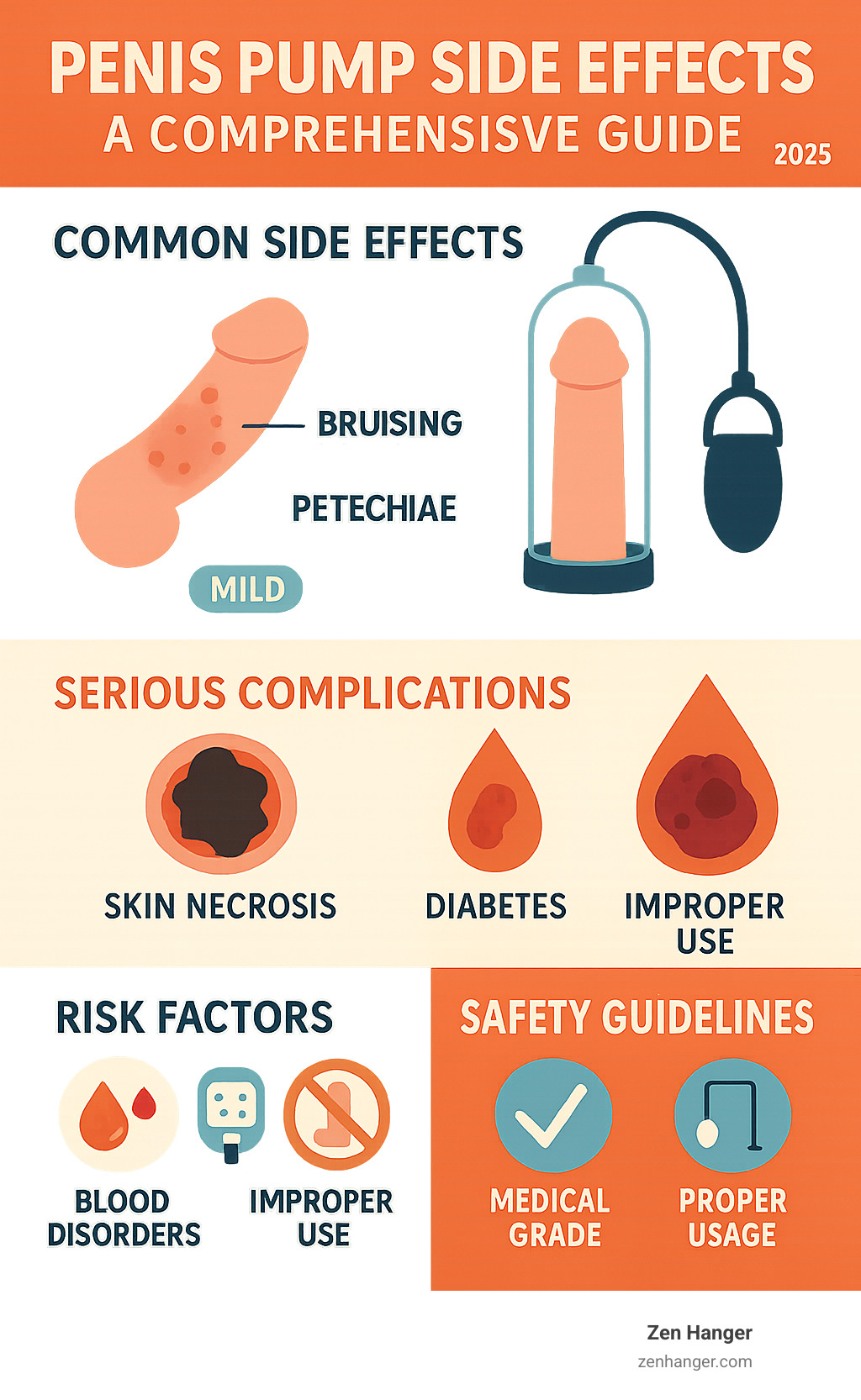
Understanding the Basics of Vacuum Erection Devices
To understand penis pump side effects, one must first know how these devices work. A penis pump, or Vacuum Erection Device (VED), is a non-invasive medical tool used to achieve and maintain an erection.
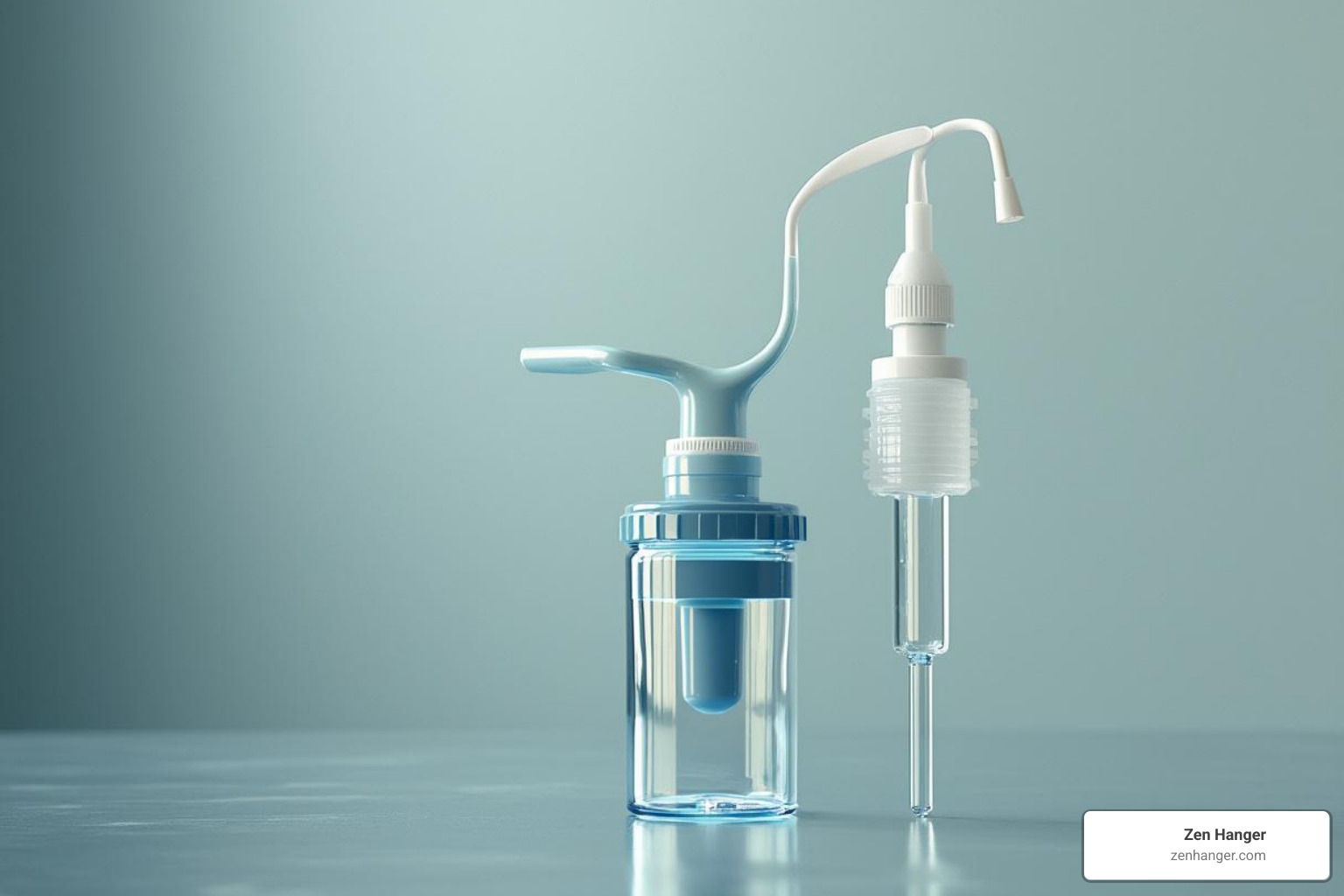
How Penis Pumps Work: The Science of Negative Pressure
A VED includes a plastic cylinder, a pump, and a constriction ring. The penis is placed in the cylinder, and the pump creates negative pressure (a vacuum). This vacuum draws blood into the penis, increasing blood flow and causing an erection. A constriction ring is then slid to the base of the penis to trap the blood and maintain the erection.
Medical Uses: Beyond Erectile Dysfunction
Penis pumps are not just for erectile dysfunction (ED); they are also vital for penile rehabilitation following prostate surgery or radiation therapy. With ED affecting a significant number of men—scientific research on ED prevalence shows rates of 5% in men over 40 and 15% in men over 70—VEDs are an important treatment.
They are an excellent non-surgical alternative for men who cannot take oral ED medications or prefer to avoid more invasive treatments.
A Safe, Non-Invasive Treatment
As a non-invasive tool, penis pumps offer localized treatment with minimal systemic effects, unlike medications or surgery. They can be used alone or with other ED therapies as part of a comprehensive treatment plan, offering flexibility based on a doctor's recommendation.
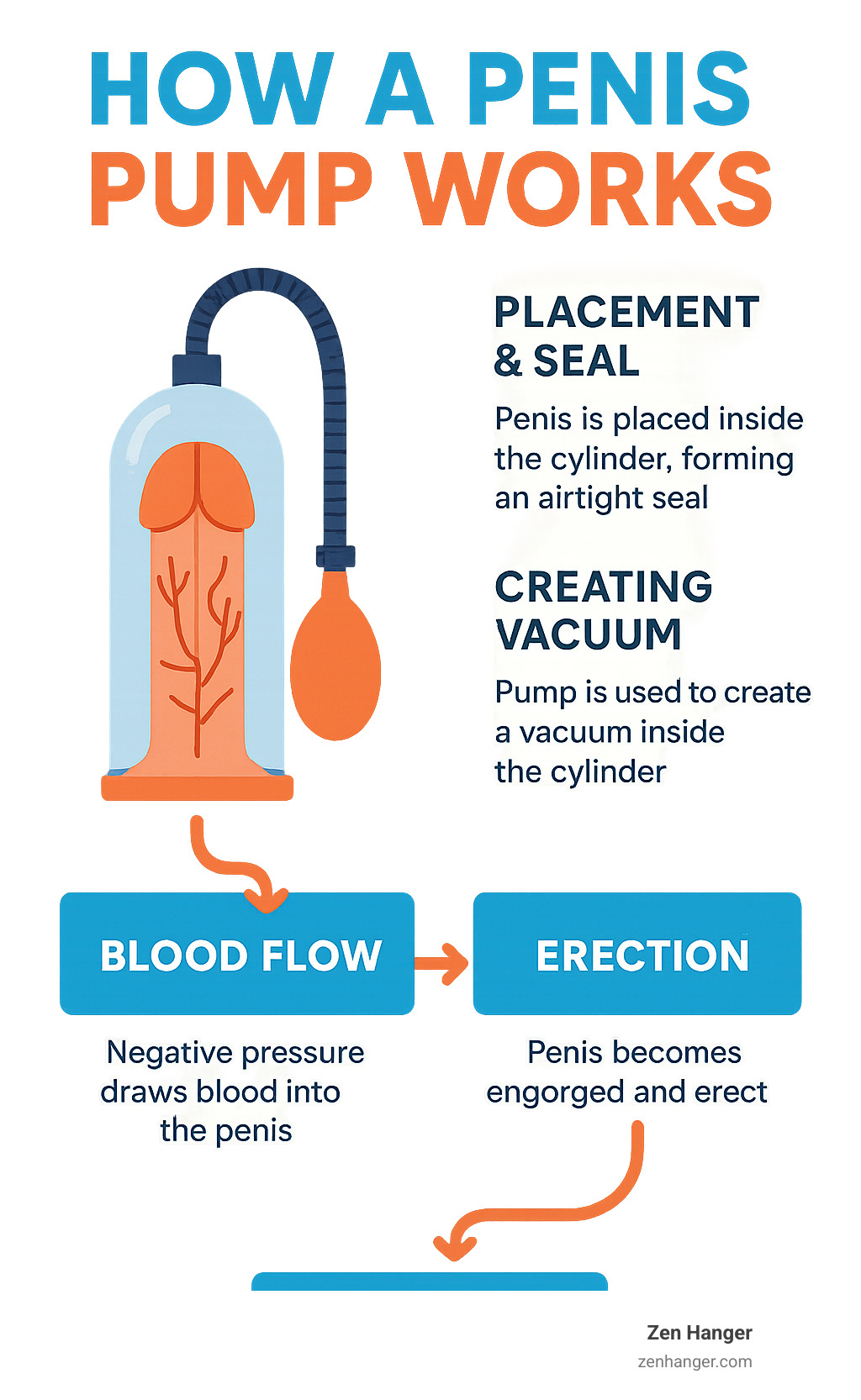
Knowing the science behind the device is the first step to using it safely and avoiding penis pump side effects.
A Guide to Potential Penis Pump Side Effects
While generally safe with correct use, it's important to be aware of potential penis pump side effects. These range from minor issues to serious complications requiring medical care. Understanding these risks helps you use your device safely.
Common and Mild Side Effects
Most mild side effects are temporary and often indicate excessive pressure or duration. They typically resolve by adjusting your technique.
Bruising: The most common side effect, caused by pumping too quickly or with too much force. Bruises on the shaft usually fade within a week.
Petechiae: These are small red dots on the skin from burst capillaries. They are harmless but signal that the pressure is too high. You can learn more about what petechiae are here.
Numbness, Cold Sensation, or Bluish Tinge: This is normal when a constriction ring is used, as it restricts blood outflow. It is critical to never leave a ring on for more than 30 minutes to prevent injury.
The "Hinge Effect": The penis may become erect in the shaft but remain softer at the base, causing it to pivot or hang down.
Testicle "Suck-Up": An uncomfortable effect where the testicles are drawn into the pump cylinder. Always ensure they are clear of the opening before starting.
Water Blisters: Pumping too aggressively, especially with water-based pumps, can cause blisters. This is a clear sign to reduce pressure and allow the area to heal.
Psychological Side Effects: Some men find the process awkward or may feel frustrated initially. Patience and correct technique are essential for good results. For more tips, read our guide on safe use and potential risks.
Serious Complications Requiring Medical Attention
Though less common, serious complications can occur, particularly with improper use or low-quality devices. These require immediate medical attention.
Persistent Pain or Bruising: If pain or bruising worsens or lasts longer than a week, see a doctor.
Burst Blood Vessels (Hematoma) and Thrombosis: Excessive pressure can cause a hematoma (a pool of blood under the skin). In rare cases, it can lead to thrombosis (blood clot), a medical emergency.
Skin Necrosis: This is severe tissue death, most often caused by leaving a constriction ring on for more than 30 minutes, which cuts off blood supply.
Severe Urethral Bleeding: Though rare, any bleeding from the urethra requires you to stop use and seek immediate medical help.
Penile Cystic Masses: In very unusual cases, VED use has been linked to fluid-filled masses on the penis that may require surgical intervention.
Peyronie's Disease: While VEDs are used to treat Peyronie's, improper use has rarely been associated with its development. Our guide on penis pumps and Peyronie's Disease explains this relationship.
Infection: Rare (less than 0.5%), but can occur if the device is unclean or if the skin is broken. Watch for redness, swelling, pus, or fever.
Trapped Semen/Painful Ejaculation: A constriction ring can sometimes cause this. A ring with a cutout may help.
For more on rare issues, see this research on unusual complications associated with Vacuum Erection Device use.
When to See a Doctor Immediately: Stop using the pump and contact a healthcare professional if you experience:
- Persistent or worsening pain or bruising
- Skin damage like blisters, sores, or discoloration
- Any bleeding from the urethra
- Unusual swelling or masses
- Signs of infection (fever, pus, severe redness)
How Pre-existing Conditions Influence Penis Pump Side Effects
Certain health conditions and medications increase the risk of penis pump side effects. Always consult your doctor before use if you have any of the following:
Blood Disorders: Conditions like sickle cell anemia that affect blood clotting significantly increase the risk of bleeding and thrombosis.
Blood-Thinning Medications: Anticoagulants such as Warfarin or Apixaban make you more prone to severe bruising and bleeding.
Diabetes: Poorly controlled diabetes can make penile tissue more fragile and susceptible to injury from vacuum pressure, increasing the risk of complications like skin necrosis.
Peyronie's Disease: Using a VED with this condition requires careful medical supervision to avoid worsening the curvature or causing new damage.
Always consult a medical professional before using a penis pump if you have any pre-existing conditions or are taking medication. They can assess your individual risk and determine if a VED is a safe option for you.
Ensuring Safety and Maximizing Benefits
By understanding the potential penis pump side effects, you can focus on using these devices safely to achieve the best results. Most complications arise from poor technique or low-quality equipment. With the right approach, penis pumps are an excellent non-surgical solution for erectile dysfunction.
Proper Usage: Duration, Frequency, and Technique
Correct technique is essential for safety and effectiveness. Treat the process with patience and care to avoid unnecessary penis pump side effects.
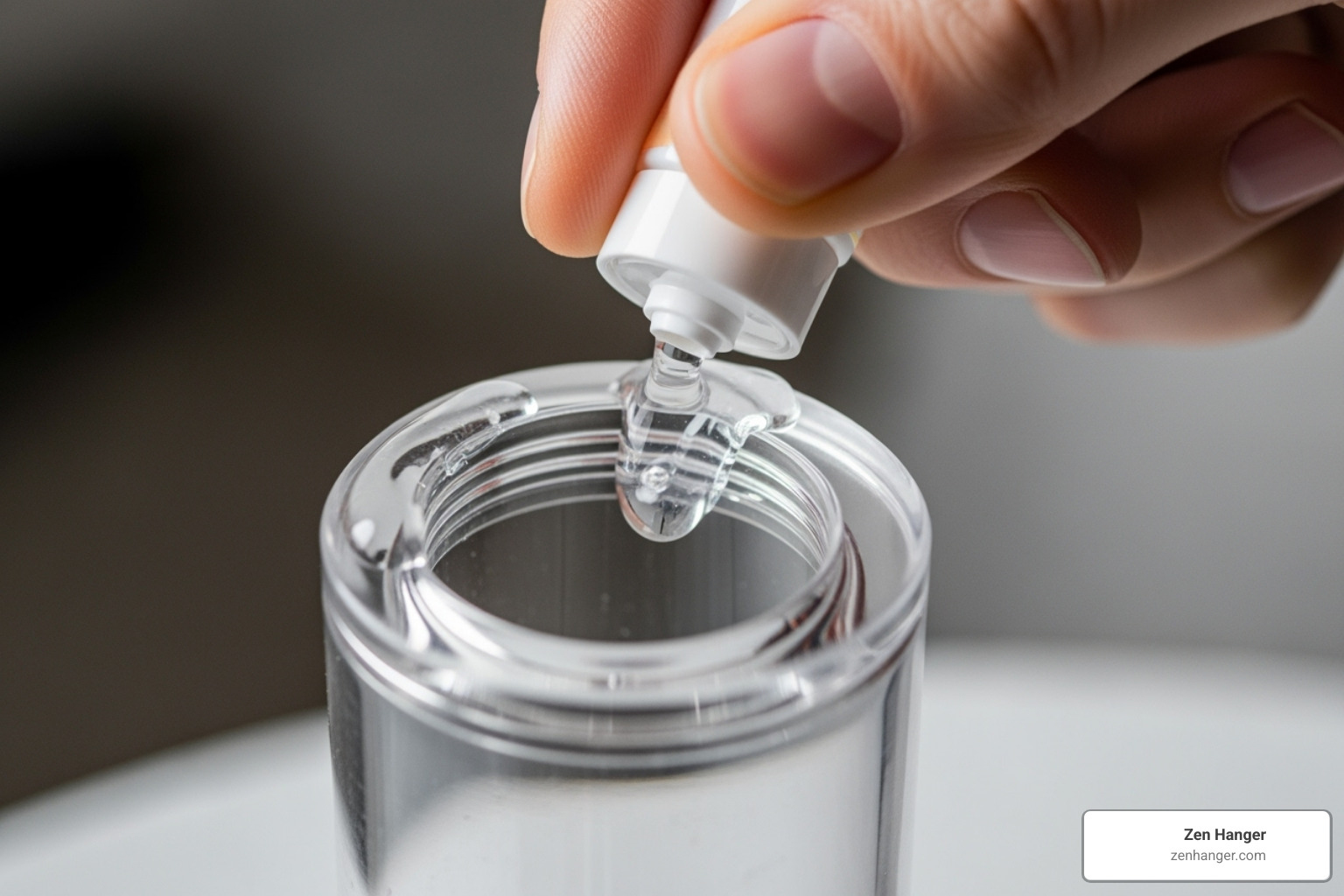
Preparation and Technique
- Use Lubricant: Apply a quality water-based lubricant to your penis and the cylinder opening to ensure a good seal and prevent friction.
- Prepare the Area: Trimming pubic hair can prevent it from getting caught. A warm shower beforehand can relax tissues and improve blood flow.
- Pump Gently: Apply slow, gradual pressure. If you feel any sharp pain, release the vacuum immediately. Your body will signal if you are being too aggressive.
- Ensure Proper Fit: The cylinder should create a comfortable seal without pinching.
Constriction Ring Safety: The 30-Minute Rule
This is a critical safety rule: never leave a constriction ring on for more than 30 minutes. Prolonged use can cut off blood flow and cause serious tissue damage. The ring should be snug enough to maintain the erection but not cause pain. After 30 minutes, remove it completely to allow blood flow to normalize.
Duration and Frequency
Typical pumping sessions should last 10-20 minutes. For treating ED, daily or every-other-day use is common. If you notice any side effects, take a break until they resolve. Consistency is more effective than intense, infrequent sessions. Our guide on penis pump duration: how long is too long? provides more detail.
The Impact of Pump Quality and the Enlargement Myth
The quality of your device directly impacts your safety and results. The market is flooded with low-quality pumps that increase the risk of penis pump side effects.
Why Medical-Grade Devices Matter
FDA-approved penis pumps are safer because they undergo rigorous testing and include features like vacuum limiters, which prevent pressure from reaching dangerous levels. Cheaper, novelty-grade pumps lack these protections. A prescription from a doctor can ensure you get a medical-grade device, which may be covered by insurance.
Air vs. Water Pumps
Traditional air-based pumps are effective but can create uneven pressure. Water-based pumps use water to create a vacuum, which many users find provides smoother, more consistent pressure and may reduce side effects like bruising.
The Truth About Penis Enlargement
It is a myth that penis pumps permanently increase penis size. While they temporarily engorge the penis with blood, this effect is not permanent. Using excessive pressure or duration in an attempt to achieve permanent gains is dangerous and dramatically increases your risk of irreversible injury, including tissue damage, chronic pain, or permanent erectile dysfunction. Our guide on how a penis pump works clarifies their intended medical function.
Conclusion: A Safe Approach to Penile Health
Understanding penis pump side effects is the first step toward using this effective tool safely. With quality equipment and proper technique, penis pumps offer a reliable, non-surgical method for managing erectile dysfunction and aiding in penile rehabilitation.
By approaching pump therapy with realistic expectations and a commitment to safety, men can regain confidence and intimacy. They are a positive, natural approach that puts you in control.
At Zen Hanger, we are committed to providing honest, comprehensive information. Our Southern California-based team wants you to succeed safely.
Before starting, consult with your doctor or urologist. They can assess your health, discuss risks, and recommend the right device and protocol for you. By prioritizing safety, you can confidently make penis pump therapy a beneficial part of your health toolkit.
For more information, learn more about safe use and potential risks.
